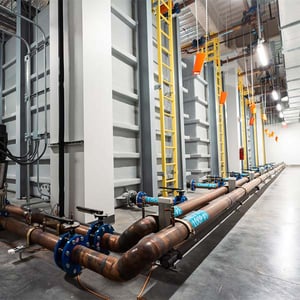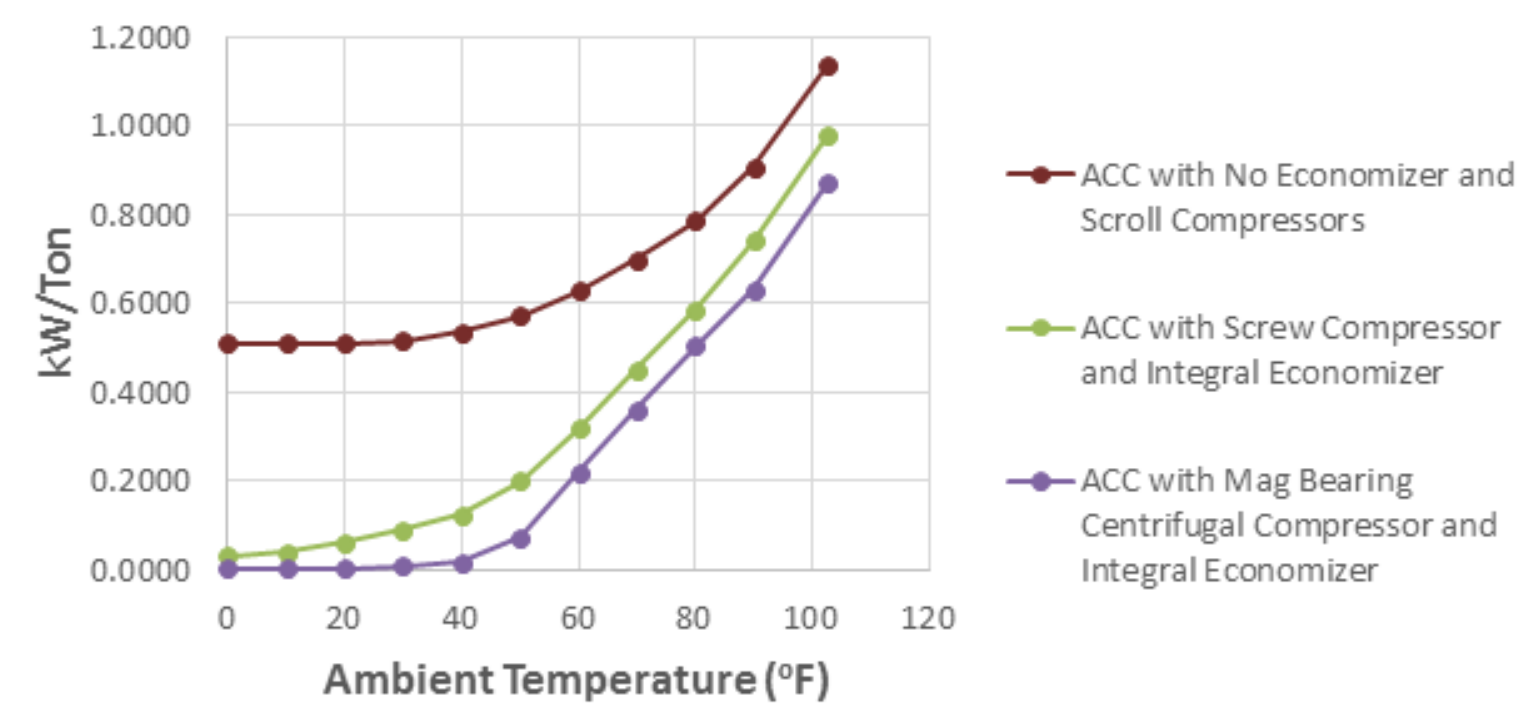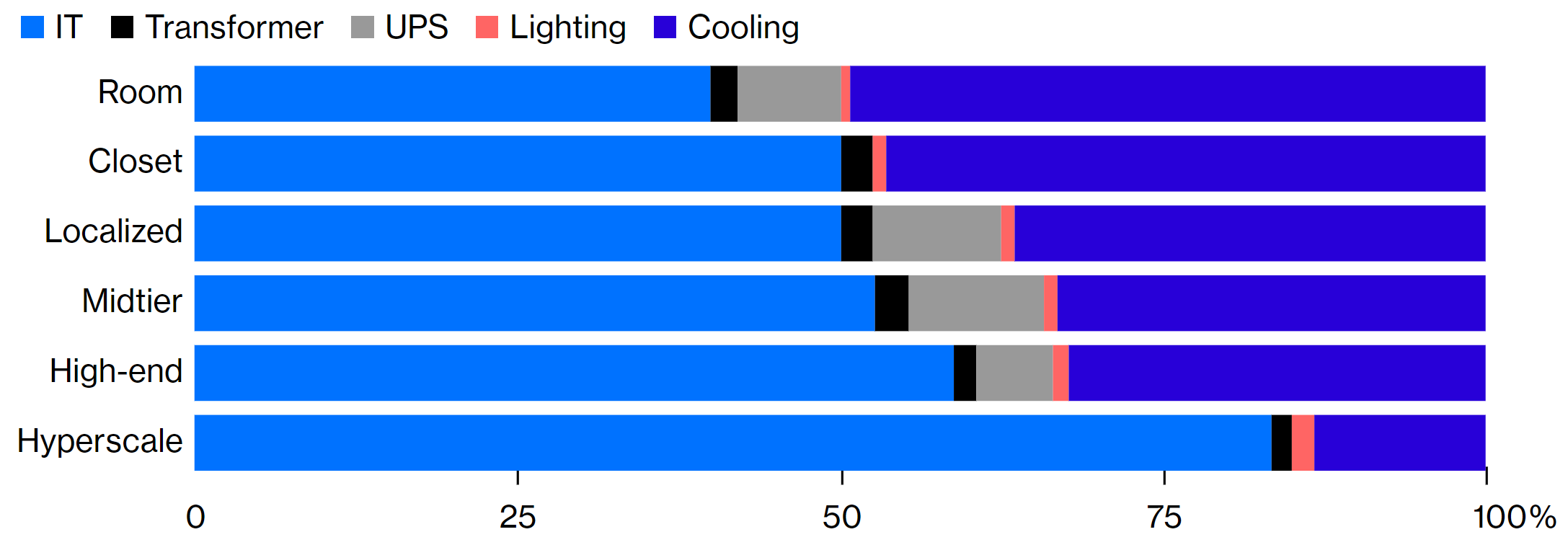
Data Center Sustainability: Even Better Than Renewable Is Energy Not Used
Data center capacity increased by 600% and storage capacity by 25x from 2018 to 2020, but energy use only grew by 6%.1 How does that happen? One reason is upgrading to innovative energy-efficient cooling solutions, for example chillers with “magnetically levitated centrifugal compressors.”
Full disclosure – I totally geeked out researching our upgraded cooling system in our Boston data center (BO1), which has three independent “maglev” chiller systems. Simply put, magnetic levitation means the compressor in the system is suspended by magnets, making it virtually frictionless; there is no contact between the shaft of the compressor and the housing, ultimately reducing the energy consumption of the system especially at partial loads. Brilliant.
Related Reading
Learn more about how we deliver cooling based on the varying power densities customers need.
Access Now
Although the demand for data center services is rapidly rising, the rate of energy use relative to that growth can be offset with more effective energy solutions for facilities and equipment. Such continued growth requires an evolution in technology, operations and sustainability initiatives for data center providers.
Driving Sustainability in a Power-Intensive World
Data centers are inherently energy intensive facilities. Performance, resiliency and security have always been key requirements for customers. Now, with increasing governmental regulations, greater awareness and the desire to be better environmental stewards, sustainability has become a larger component of their purchasing decisions. An increased demand for data center providers to leave a greener footprint means deploying energy-efficient practices to optimize the use of space and power.
Energy-efficient data centers with high uptime and performance are critical. They not only enable customers to reduce their data center footprint but also dramatically lower their energy consumption and costs.
Because there is no one-size-fits-all approach when it comes to sustainability, flexibility and optimization in buildout and equipment design are central to reducing inefficiencies. Adopting strategies and setting goals that balance environmental impact with customer needs and costs gives rise to greater success.
Cooling: A Great Power Consumer
The primary source of energy consumption in the data center comes from the customer’s IT equipment. In data centers, stable temperature and humidity levels enable servers to function properly to achieve maximum uptime and an extended lifetime. While operating servers at maximum heat can reduce energy consumption, the risk of equipment failure can be substantial. Keeping the hardware cool is essential to its performance and return on investment.
Traditional methods of cooling use a large amount of energy to diffuse heat generated by the IT equipment. And since the cooling system is one of the largest consumers of energy in a data center, any efficiency gains can improve the site’s overall carbon footprint. Replacing outdated cooling systems with more efficient chillers, like the one implemented in CoreSite’s Boston facility, allows for more flexible operation that better aligns cooling performance to customers’ specific applications and variable loads.

The upgraded chiller plant in BO1 (a multitenant colocation site) delivers cooling based on varying power densities. It comprises three independent chillers with magnetically levitated centrifugal compressors which line up functions independently. Each includes a series-integrated plate heat exchanger for full-to-partial economization. This means the system can be specifically adjusted and tuned to meet customers’ unique compute requirements.
Modern data centers optimize cooling and airflow in their computer room designs to maximize efficiency. Some use free cooling by integrating an economizer, like our plate and frame heat exchangers, that pulls outside air into the facility and allows chillers to reduce operating levels and occasionally switch off completely, thereby reducing annual energy expenditure. In Boston and other campuses, CoreSite is able to use outside air for free cooling up to 60% of the time.
Measures to Indicate Energy Efficiency
Power useage effectiveness (PUE) is the most common indicator of the energy efficiency of a data center. PUE is the ratio of the total energy used compared to the energy used by the IT equipment. The reduction in this ratio is key to gauging success. As PUE and sustainability go hand-in-hand, this metric is crucial to justifying and driving adoption of energy-efficient upgrades and strategies.
Although the cooling system is not the only factor involved in calculating PUE, it contributes up to 40% of the total energy consumed.3 Any improvement in cooling efficiency amounts to tremendous savings in energy use and costs for the facility and translates to cost savings for customers.

In our Boston facility, the more efficient cooling system significantly reduces the site’s PUE, resulting in an annual savings of nearly eight million kilowatt-hours. It’s a triple win – for CoreSite, customers and the environment.
Visibility in Sustainable Practices Leads to Accountability
Increased transparency about how data centers and customer systems perform go a long way when it comes to sustainability. Roughly 20% of customers require sustainable practices of their data center provider, and that will likely grow. Cutting-edge technology solutions provide real-time metrics so that providers and customers alike can track and report against their own sustainability goals.
Many modern data centers utilize Data Center Infrastructure Monitoring (DCIM) and other power monitoring systems to provide insights at various points in the power chain. This information, which provides detailed equipment-specific load data, can be used to improve infrastructure layout and design to maximize efficiencies within the data center and ensure energy is not being wasted.
Customers also require visibility into the operation of the data center and their own systems. MyCoreSite is CoreSite’s customer servicer delivery platform which provides more visibility and control of data center systems, equipment and services. CoreINSITE®, a data center intelligence solution within MyCoreSite, gives customers access to sustainability metrics including carbon footprint, power usage, environmental conditions, and historic as well as near real-time performance data.
Solutions like these provide much-needed data transparency and enable customers and providers to track their progress against sustainable energy goals and strategies.
Continuing this Sustainable Journey
The demand for digital services shows no sign of slowing, placing increased pressure on data center providers to innovate and drive toward greater energy efficiency and sustainability. As carbon accounting and greenhouse gas emissions standards and regulations continue to evolve, the sustainability goals and strategies of providers and customers will also grow and adapt to minimize environmental impact while meeting the energy demands of future data center applications. That’s a great journey in itself.
Read our Sustainability Report and contact us to learn how CoreSite’s data center facilities and data center infrastructure management (DCIM) solution can help your business cut costs and achieve sustainability goals.










